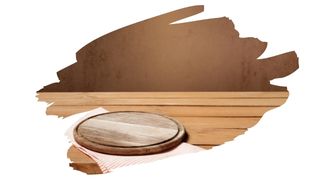So, your masterful woodwork project is done and done.
It may have taken a bit of time, but now oiled to perfection, that teak oil has done its job and dried into a nice even coat.
There’s nothing left to do now but to wrap things up with an additional top coat of sealer.
Now, once that teak oil coat has cured, your sealer choices run aplenty. You can apply everything from lacquer to polyurethane, dewaxed shellac and even epoxy resin onto that teak finish.
But, can you put varnish over teak oil too?
Provided that the teak oil coat has completely cured, then yes, you can apply varnish over it.
Teak oil takes up to 4 hours to dry (depending on the product brand). But it can take much longer to completely cure. And it’s only once teak oil has cured that it is ready for a top coat of varnish.
What Is The Difference Between Dry And Cure? When a drying oil such as teak oil is dry, it has transformed from a liquid into a soft film. But, when we say it has cured, that means it has gone through a chemical process that has turned that soft film into a hard resin throughout.
Now, it is important to note here that, teak oil isn’t a natural oil or even a particularly unique type of blend.
Instead, it is made up of a jumble of different things such as Linseed oil, Tung oil, varnish, mineral spirits… and pretty much whatever thinners you might have to hand.
And, funnily enough, wood oil from the Teak Tree is not among the ingredients found in this oil.
Rather, the ‘teak’ in teak oils name refers to the fact that this product is meant to be applied onto teak wood. It’s name does not refer to any of the ingredients actually found inside the product itself.
Instead, teak oil is largely similar to Danish oil, (which is an oil finish also made from a mixture of Tung oil and Linseed oils). Except, where as Danish oil leaves behind a satin coat, teak oil will give you a matte finish.
Still regardless, teak oil doesn’t really have an industry-standard recipe. Which is why so many teak oil products can often wildly differ from one another.
So, what more do you need to know to make sure that varnish will stay on your particular blend of teak oil? Let’s get into it…

This post may contain affiliate links to products that we receive a commission for (at no additional cost to you). Learn more here.
What Finish Can You Put Over Teak Oil For Best Results?
Well, teak oil is always going to need a top coat sealant… especially if it might be exposed to water spills, humidity, and moisture.
You see, teak oil can do a good job at making wood more rot and decay resistant. This is all thanks to its ability to soak into timber – coating wood both inside and out.
And once teak oil hardens into a waterproof resin, this will prevent moisture from getting into wood grain (causing rot and decay).
However, teak oil does not form a water-tight seal around wood. In fact, it doesn’t build up much of a film on the surface of wood at all. Plus, teak oil isn’t very scratch-resistant either.
Related Post: Deciding Between Teak Oil Vs Varnish (Best Practice Revealed)
Which means that any sealer that can both repel water and handle abrasions, is your best option.
So, polyurethane sealer is the best choice for this. This particular sealant can be used to seal both outdoor and interior wood.
But, it is closely followed by lacquer and varnish. All three sealants offer superb waterproofing. However, lacquer and varnish only work best when applied to interior woodwork.
Still, polyurethane is the most scratch-resistant and durable of the three.
Related Post: What Is The Difference Between Lacquer and Polyurethane?

OK, So Can Varnish Be Applied Over Oil (Cured Or Otherwise)?
As long as it is a fully cured drying oil, then yes, you put varnish over it. Otherwise, no.
Drying oils, like Boiled Linseed oil and the like, are oily substances that can transform into a hard brittle resin. Basically, once cured, they do not leave behind a greasy film on the surface of wood.
Non-drying oils, like Mineral oil, are oils that never cure. In fact, they don’t even so much as dry at all. As a result, they always leave wood feeling a little greasy to the touch. And that oily grease will make it hard for varnish to adhere to.
Does Teak Oil Waterproof Wood? It makes wood more waterproof by improving timbers ability to resist wood rot and decay. However, teak oil does not make wood water resistant. Only a top coat of sealant over teak oil can do that.
So, Can I Go Ahead An Apply Varnish Over Teak Oil?
Have you given that teak oil enough time to cure through? Then sure, have at it!



